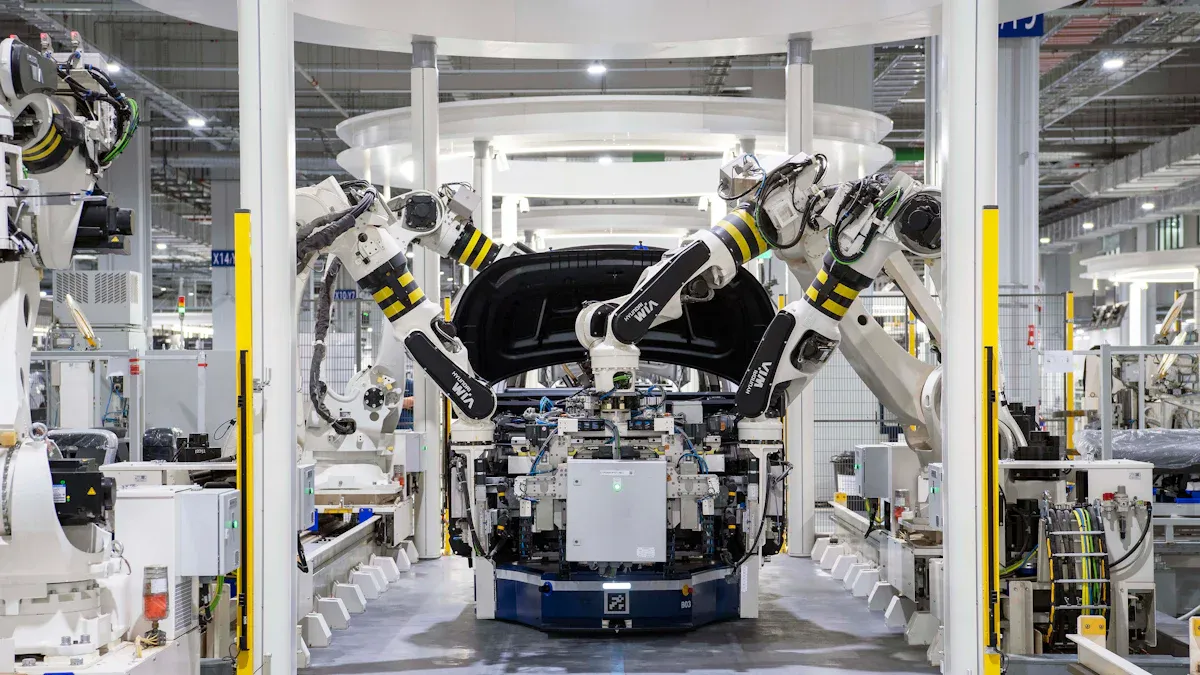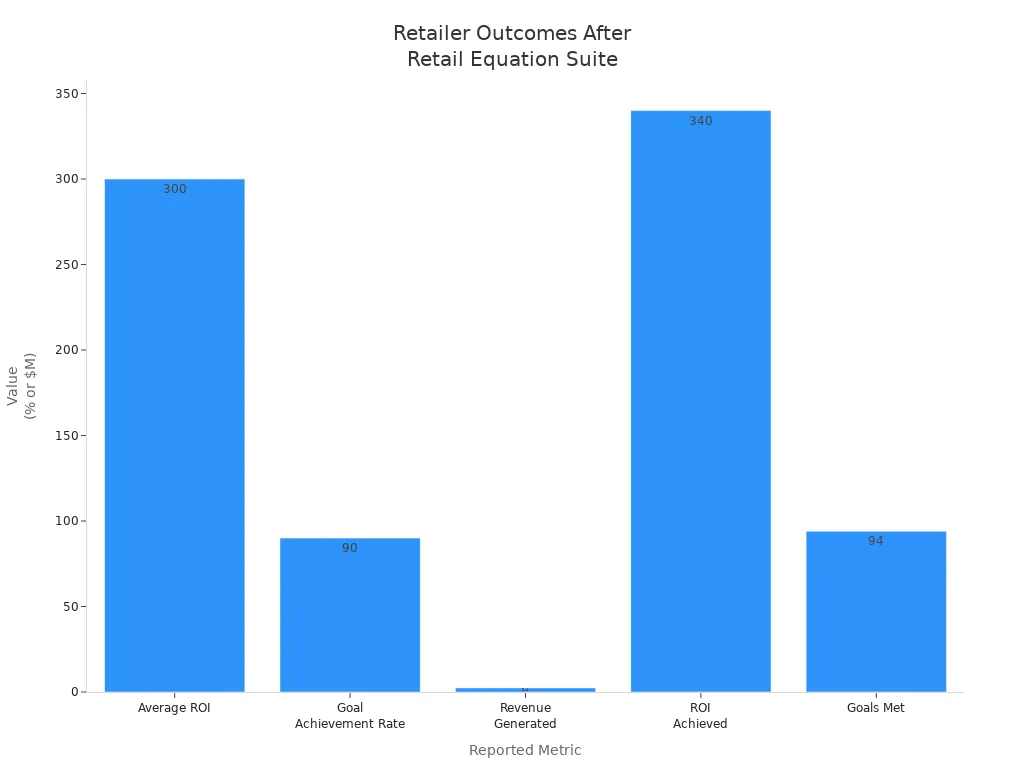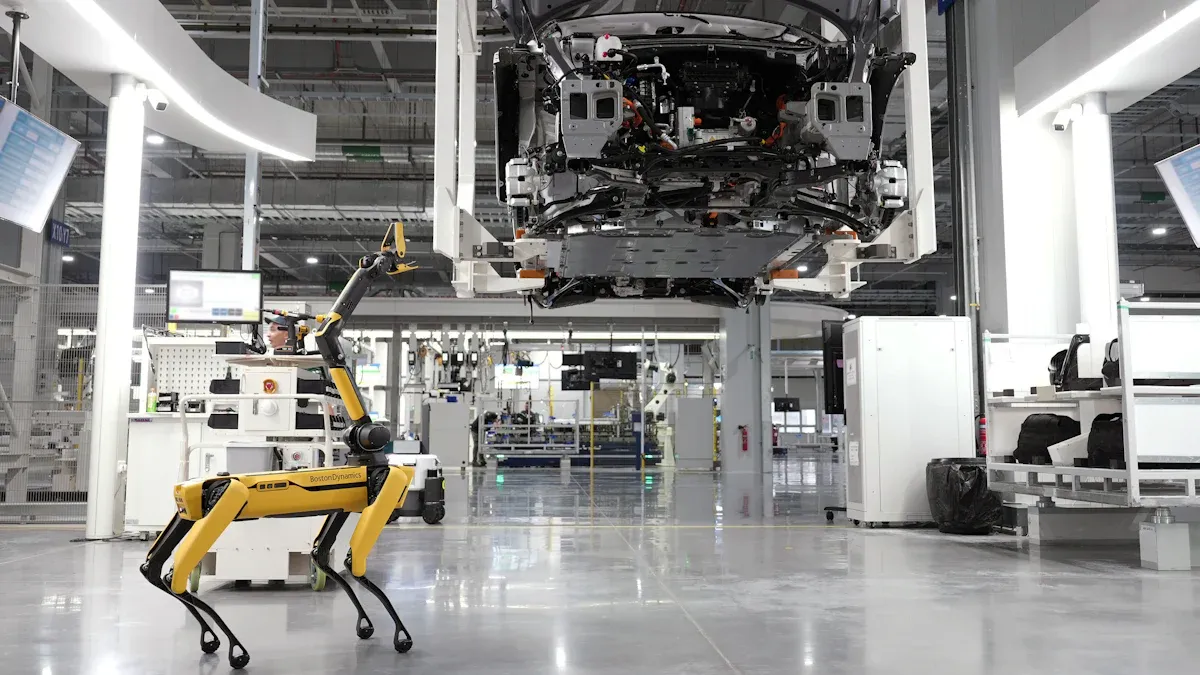Who invented the retail equation and why it matters for 2030 automation

The Retail Equation, led by innovators like Ray Kelly, shapes how you interact with stores today. You see data-driven analytics working behind the scenes to stop fraud and make shopping safer. Machine learning models review transactions in real time and spot unusual patterns.
When you return an item, intelligent systems calculate a risk score, helping retailers make quick decisions and reduce false positives.
Machine Learning Feature | Impact in Retail Fraud Prevention |
|---|---|
Increases prevention rates and transaction trust | |
Risk score calculations | Improves accuracy and reduces mistakes |
Post-transaction threat identification | Strengthens fraud strategies |
Chargeback source detection | Lowers losses and future disputes |
The retail equation stands at the center of these advances, preparing you for a more automated shopping experience by 2030.
Key Takeaways
The Retail Equation uses data and machine learning to enhance your shopping experience by preventing fraud and ensuring safe transactions.
Ray Kelly transformed retail technology, allowing stores to focus on strategic tasks instead of routine operations, improving service and efficiency.
Automation in retail will increase by 2030, making shopping faster and more efficient while allowing workers to focus on customer service.
Privacy laws like GDPR and CCPA protect your data, ensuring that stores use your information responsibly and transparently.
Understanding the retail equation helps you enjoy a safer, smarter shopping experience with personalized services and quicker transactions.
Inventor

Ray Kelly’s Role
You might wonder who stands behind the technology that powers your shopping experience. Ray Kelly, as the senior director of IT for The Retail Equation, has played a major part in shaping how retailers use data. He led the IT team to new heights by improving service levels and making operations more efficient. Under his leadership, the team moved away from old, script-driven systems and adopted smarter solutions. This change allowed the IT department to spend less than 5% of its time on routine tasks, so they could focus on bigger projects that help you shop with confidence.
Here’s a quick look at Ray Kelly’s key achievements:
Achievement | Description |
|---|---|
Improved IT service levels | Transitioned from a legacy, script-driven scheduler to a more efficient solution, enhancing service delivery. |
Increased productivity | The IT department now spends less than 5% of its time on batch workload management, allowing more focus on strategic tasks. |
High job execution success | Executes 350,000 jobs annually with a 99.5% success rate, demonstrating reliability and efficiency in operations. |
You benefit from these improvements every time you make a return or a purchase. The retail equation works in the background, making sure your transactions are safe and smooth.
Company Origins
The Retail Equation started with a clear goal: help retailers use data to make better decisions. In the early 2000s, the company began as The Return Exchange. As the needs of retailers grew, the company changed its name to The Retail Equation to show its wider focus on analytics. The team introduced new tools like Return Rewards™ and Verify-1® to help stores handle transactions faster and more accurately.
Take a look at how the company evolved:
Year | Action Taken | Description |
|---|---|---|
2000s | Name Change | The Return Exchange rebranded to The Retail Equation to reflect its broader focus on retail analytics. |
2000s | Technology Expansion | Introduced technology offerings like Return Rewards™ and Verify-1® to enhance transaction efficiency. |
2020s | Market Positioning | Positioned to leverage statistical modeling and predictive analytics for all retail transactions, not just returns. |
You see the results of this journey every time you shop. The retail equation helps stores use data to prevent fraud and improve your experience. By focusing on analytics, the company set the stage for the future of retail automation.
Retail Equation
Definition
You may wonder what the retail equation really means. It is more than just a formula. The retail equation is a set of advanced tools and analytics that help stores make smart decisions. You see it in action when you return an item or make a purchase. This system uses data and predictive models to decide if a transaction is safe or risky. Retailers use the retail equation to protect their business and improve your shopping experience.
The retail equation works in many types of stores. You find it in experience-based retail, where stores create fun and engaging spaces for you. Direct-to-consumer brands, like Tuft & Needle and Warby Parker, use it in their physical stores to learn more about their customers. Some stores even create "shops in shops," where different brands share space and use the same smart tools.
Experience-based retail creates immersive environments for you.
Direct-to-consumer brands open stores to collect data and improve service.
Shops in shops let brands work together and reach more customers.
How It Works
When you return an item, the retail equation steps in. The system checks your return in real time. At stores like Finish Line, you show your ID. The system uses predictive analytics to decide if your return is accepted, warned, or declined. This process helps stores stop fraud and keep honest customers happy.
The system makes quick decisions on returns: accepted, warned, or declined.
You present your ID, which the system checks using smart algorithms.
The goal is to spot fraud while letting good returns go through.
You see the benefits in many ways. Stores use the retail equation to:
Deploy best practices quickly.
Here is a table showing the results stores have seen:
Metric | Value |
|---|---|
Average ROI | 300% |
Goal Achievement Rate | 90% |
Time to See Results | 30 Days |
Revenue Generated | $2.4M |
ROI Achieved | 340% |
Goals Met | 94% |

"SMS-iT's RAAS model transformed our patient engagement strategy. We saw measurable improvements in patient satisfaction and operational efficiency within 30 days, achieving a 340% ROI in the first year."
You also find that the retail equation focuses on fraud reduction. It uses predictive analytics to tell the difference between honest and dishonest returns. Other solutions, like Appriss Retail, use AI to reduce returns and online fraud. The retail equation's Verify solution only affects a small number of returns, so most customers do not notice any change.
Solution | Focus on Fraud Reduction | Methodology |
|---|---|---|
The Retail Equation | Targets legitimate vs. fraudulent returns | |
Appriss Retail | AI-based analytics for real-time recommendations | Reduces returns and online fraud |
You should also know that privacy rules affect how stores use the retail equation. In China, stores must tell you how they use your data and get your consent. In the EU, strict rules like GDPR protect your information. In the USA, laws like CCPA give you more control over your data. These rules help build trust between you and the store.
Region | Regulatory Impact on Retail | Consumer Behavior |
|---|---|---|
China | Clear data usage and consent required | More trust due to strong protections |
EU | Strict data protection (GDPR) | Higher sense of security |
USA | Focus on consumer rights (CCPA) | Some skepticism about data usage |
People in different countries feel differently about privacy.
The link between privacy rules and how you shop is complex.
The retail equation gives you a safer, faster, and smarter shopping experience. Stores use it to protect themselves and serve you better.
2030 Automation

Retail Equation in Automation
You see automation changing how stores work every day. The retail equation plays a big role in this shift. Stores use AI and automation tools to manage inventory, sales, and staff schedules in real time. These systems help managers spot problems quickly and make smart choices. You benefit from faster service and fewer mistakes.
AI tools process inventory and sales data as it happens.
Automation systems flag issues and suggest fixes right away.
Predictive labor forecasting uses past sales and current trends to plan staffing needs.
Here is a table showing how new technologies use the retail equation to improve store operations:
Technology | Application |
|---|---|
Automated Inventory Management | Tracks stock levels in real time and prevents out-of-stock situations. |
Modern POS Solutions | Connects inventory and customer data for better management. |
CRM Automation | Personalizes marketing and manages customer interactions. |
Video Analytics | Studies how customers move in stores to improve layouts. |
Speeds up shopping and collects data on buying habits. | |
AI and Machine Learning | Analyzes data to help managers make better decisions. |
Robotic Process Automation (RPA) | Handles repetitive tasks, making stores more efficient. |
IoT for Inventory Management | Monitors stock and conditions in real time. |
Data Analytics | Gives insights for smarter business choices. |
Case Studies (Walmart, Amazon) | Shows how automation boosts efficiency and customer satisfaction. |
You can see these changes in stores like Amazon Go, where you shop without waiting in line. Walmart uses smart shelves to track products. Sephora lets you try on makeup virtually. Nike and Nordstrom use chatbots to help you find what you need. Macy’s uses AI to restock items quickly.
Retailer | Example Description |
|---|---|
Amazon Go | Cashier-less store using cameras and sensors to track purchases, eliminating checkout lines. |
Walmart | Smart shelves that monitor inventory levels in real time, optimizing inventory management. |
Sephora | Virtual Artist app for customers to try on makeup virtually, enhancing product engagement. |
Nike | AI-powered chatbots providing 24/7 customer service. |
Nordstrom | AI chatbots that recommend products and schedule appointments with stylists. |
Macy’s | AI automating replenishment processes for omnichannel operations, improving efficiency. |
Future Impact
By 2030, you will see even more automation in stores. Experts predict that almost all repetitive tasks will be automated or at least supported by AI. This means workers can focus on helping you and solving problems, not just doing the same task over and over. AI will also make it much faster to add new products to stores, cutting the time by up to 90%.
Automation will handle most routine jobs in stores.
AI will let workers spend more time on tasks that add value.
New product setup will become much quicker.
The market for retail automation is growing fast. By 2030, it could reach $47.55 billion. This growth shows that stores are investing in digital tools and AI to keep up with what you want as a shopper.
Year | Market Value (USD Billion) | CAGR (%) |
|---|---|---|
2024 | 27.62 | N/A |
2025 | 30.51 | N/A |
2029 | 44.3 | 9.9 |
2032 | 64.09 | 12.9 |
Machine learning will make the retail equation even smarter. You will see stores use big data to spot trends and predict what you want to buy. AI will help managers set prices, manage risk, and keep shelves stocked. E-commerce sites like Amazon already use machine learning to suggest products based on your browsing and buying habits.
Machine learning finds patterns in how you shop.
AI helps stores set prices and manage inventory.
Online stores use these tools to personalize your experience.
You will also notice new ways to shop. Stores will use virtual and augmented reality to make shopping more fun. You might try on clothes or makeup using your phone. Stores will become places where you can explore and interact, not just buy things.
Stores will use AR and VR to create fun shopping experiences.
You will see more interactive tools, like virtual try-ons and games.
Flagship stores will mix technology with personal service.
Retailers will need to build strong supply chains to support these changes. Advanced analytics and AI will help them predict demand and keep products in stock. Stores will also try new ways to deliver products, balancing speed and cost.
You may see some challenges as automation grows. Stores will need to invest in new technology, which can be expensive. Some jobs may change or disappear, leading to concerns about fairness. Different countries will adopt automation at different speeds, depending on their rules and needs.
Note: Experts say that understanding customer behavior, return rates, and loyalty will be key for stores. Data from the retail equation will help stores adapt and stay competitive in a changing world.
You have seen how Ray Kelly and The Retail Equation changed retail by using data and smart technology. The retail equation helps stores spot fraud, improve service, and prepare for the future.
Aspect | Description |
|---|---|
Technology Integration | |
Data Analysis | Early red flags help prevent fraud. |
Customer Relationship | Stores balance security and customer care with strong policies and training. |
Understanding these tools lets you adapt to new trends.
You can optimize workflows and improve customer experiences.
Tip: Keep your analytics systems secure and train your staff to stay ahead in the evolving retail world.
FAQ
What is the main goal of the retail equation?
You use the retail equation to help stores spot fraud and improve your shopping experience. It uses data and smart tools to make quick decisions about returns and purchases.
How does the retail equation protect your privacy?
Stores follow strict privacy laws like GDPR and CCPA. You control your data. The system only uses your information to check returns and prevent fraud. Your privacy stays protected.
Can the retail equation reject your return?
Yes, the system can decline a return if it finds risky patterns. You may see a warning or a rejection. Most honest returns go through without problems.
Will automation take away retail jobs by 2030?
Automation will change many jobs. You may see fewer routine tasks. Workers will focus more on helping customers and solving problems. New technology can also create new roles.
How can you benefit from retail automation?
You get faster service, safer transactions, and more personal shopping. Stores use data to stock what you want and help you find products quickly. Automation makes your experience better.
See Also
Essential Insights on AI-Driven Corner Stores for Retailers
The Future of Retail: Embracing AI-Enhanced Stores
Transforming Retail: The Impact of Smart Electronics Vending Machines
Understanding Corner Stores: Their Importance in Retail Today
Enhancing Accessibility in Retail Through Grocery Vending Machines
